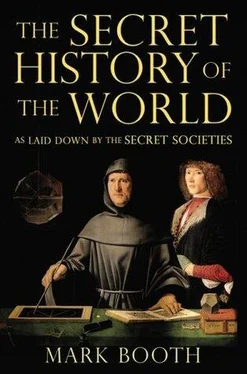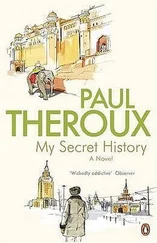Jesus ben Pandira, the leader of the Essenes, might preach purity and universal compassion, but from a point of view of a movement to withdraw from the world altogether. Stoics might teach responsibility, but to them this was a duty without joy. ‘Never let the future disturb you’, the Stoic emperor Marcus Aurelius would offer as a philosophy of life — ‘you will meet it, if you have to, with the same weapons of reason which arm you today against the present’. These words are full of weariness.
Humanity felt itself dragged along by a tide of suffering. We may imagine how people longed to hear someone say, ‘Come with me, ye that are heavy-laden, I will give you rest.’
We saw the candidate for initiation being shown the green wheat ear in the inner sanctum at Eleusis and taught to look forward to the ‘seed time’. In the inner sanctum of great Egyptian temples, candidates for initiation had been shown Isis suckling the infant Horus. This second Horus, this Horus-to-come, would be a new king of the gods bringing a new dispensation. He was called the Good Shepherd, the Lamb of God, the Book of Life and the Truth and the Life. Isaiah had told his people to make straight the ways of the Lord. He promised their sins would be washed away as he envisioned the coming of the Messiah. In the Fourth Eclogue the Roman initiate-poet Virgil predicted the coming of the man-god, the Saviour. ‘The Golden Age will return as its first-born descends from on high,’ he wrote, ‘… all the stains of our past wickedness will be washed away.’
In fact the life of Christ Jesus as it has come down to us might look like a patchwork of events in the lives of those who came before him: born to a carpenter and a Virgin, like Krishna: born on December 25, like Mithras; heralded by a star in the East, like Horus; walking on water and feeding the five thousand from a small basket, like Buddha; performing healing miracles, like Pythagoras; raising from the dead, like Elisha; executed on a tree, like Adonis: ascending to heaven, like Hercules, Enoch and Elijah.
It is hard to find any act or saying ascribed to the Jesus of the Gospels that had not been foreshadowed in some way. Anyone minded to think corrosively will decide to see this as evidence that his life was a fiction. But in the secret history this is a universal movement of convergence as the whole cosmos strained to give birth to the new Sun god.
Looking at the great imaginative image of the Nativity as it has been depicted in history’s greatest art, and decoding it according to the secret doctrine, we can see how the whole secret history of the world had been leading up to this point.
In Mary we should sense the presence of Isis; when the sun arose in the constellation of Pisces, the sign of Jesus, the constellation on the opposite horizon was Virgo. In Joseph, the patriarch carrying a crooked staff, we see Osiris — his staff symbolizing the Third Eye. The cave in which Jesus Christ is often represented as being born is the bony skull in which a new miracle of consciousness is about to be ignited. The baby in the manger has the luminous vegetative body of Krishna. The ox and the ass represent the two ages that have led to the new Age of Pisces — the Ages of Taurus and Aries. The star that guides the Magi is the spirit of Zarathustra (‘the golden star’). One of the Magi is Pythagoras reincarnated, and the Magi have been initiated by the prophet Daniel. The angel who announces the birth to the shepherds is the spirit of the Buddha.
THE SECRET TRADITION SOMETIMES HAS a propensity to see how things are with a, child-like simplicity.
The two Gospels with infancy narratives, Luke and Matthew, give very different, indeed inconsistent, accounts, starting with the different genealogies ascribed to Jesus, the time and place of the births, and the visit by the shepherds in Luke and by the Magi in Matthew. This is a distinction rigidly maintained in the art of the Middle Ages that has since been lost. While it may be glossed over in church, academic theologians accept that where these accounts conflict at least one must be false — perhaps an uncomfortable conclusion for anyone believing that scripture is divinely inspired.
In the secret tradition, on the other hand, there is no problem, because these two narratives describe the infancies of two Jesus children. These boys had a mysterious kinship. They were not twins, though they looked almost identical.
In the Gnostic text the Pistis Sophia , contemporary with the canonical books of the New Testament — and considered by some scholars to have equal claim to authenticity — there is a strange story concerning these two children.
Mary sees a boy who looks so exactly like him that she naturally takes him to be her son. But then this boy disconcerts her by asking to see her son, Jesus. Fearing that this must be some sort of demon, she ties the boy to the bed, then goes out into the fields looking for Joseph and Jesus. She finds them erecting vine poles. The three of them go back to the house. The boys gaze at each other, amazed, and embrace.
The secret tradition that traces the subtle, complex process by which human form and human consciousness was put together has a parallel in its tracing of the extremely complex process by which the incarnation of the Word was brought about. In this account it was necessary for one of the two Jesus children, who carried the spirit of Krishna, to sacrifice his individual identity in some mysterious way for the sake of the other. The spiritual economy of the cosmos required him to do this so that the boy who survived would in time be ready to receive the Christ-spirit at the Baptism. As the Pistis Sophia says, ‘ye became one and the same being’.
This tradition of the two Jesus children was maintained by the secret societies and can be seen on the north portal at Chartres, in the apse mosaic of San Miniato outside Florence and in the paintings of many initiates, including Borgonone, Raphael, Leonardo and Veronese.

The Leonardo Cartoon in the National Gallery, London. The esoteric dimension to this work is conveyed by the swirling, star-spangled light that suggests the world between the worlds. It depicts the two Jesus children. Similarly in the London version of the Virgin of the Rocks nearby, a later hand than Leonardo’s has added the elongated form of the cross that in Christian art is John the Baptist’s distinctive insignia.
‘IN THE BEGINNING WAS THE WORD, and the Word was with God and the Word was God… All things were made by him… And the light shineth in darkness and darkness comprehended it not… He was in the world, and the world was made by him, and the world knew him not.’
The author of the Gospel of St John is here comparing the creation of the cosmos by the Word with the mission of Jesus Christ, the incarnated Word. John presents this second mission as a sort of second creation .
At a time when the material universe had become so dense that it was all but impossible for the gods to manifest themselves on the earth’s surface, the Sun god descended.
His mission was to plant a seed. This spiritualizing seed would grow to provide the space that would be the new arena in which the gods could manifest themselves…
The crucial point here, usually overlooked outside the secret tradition, is this: Jesus Christ created the interior life.
We have seen an intimation of the interior life in the still, small voice heard by Elijah. Similarly in Jeremiah the Lord says, ‘I will put my hand in the inward parts and in their heart I will write it.’ But the planting of the sun seed just over two thousand years ago was the decisive event in the process which has led to each of us experiencing inside of ourselves a cosmos of infinite size and variety.
Читать дальше













